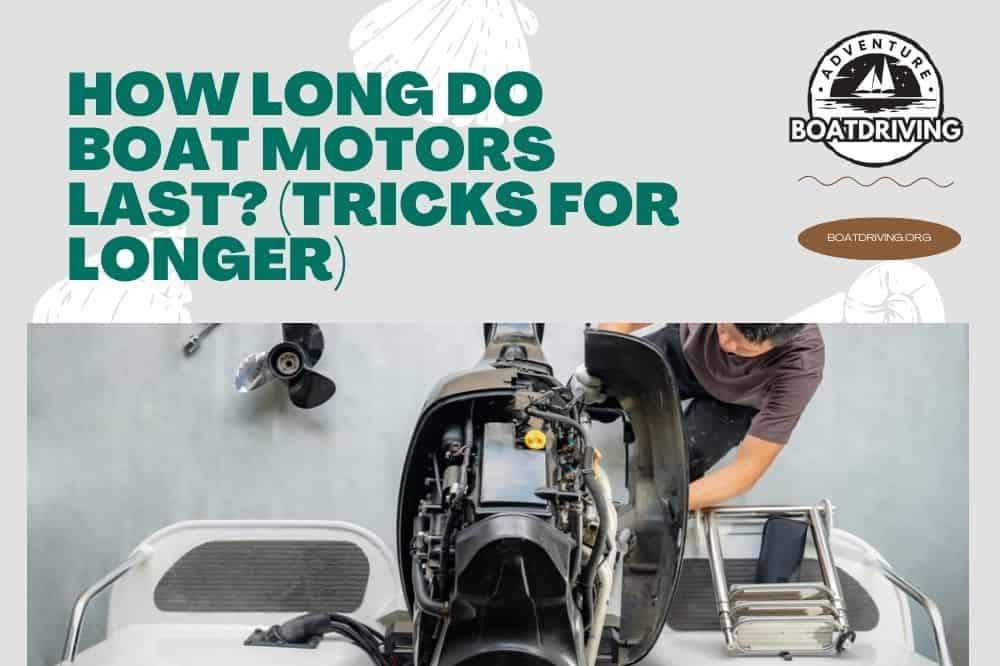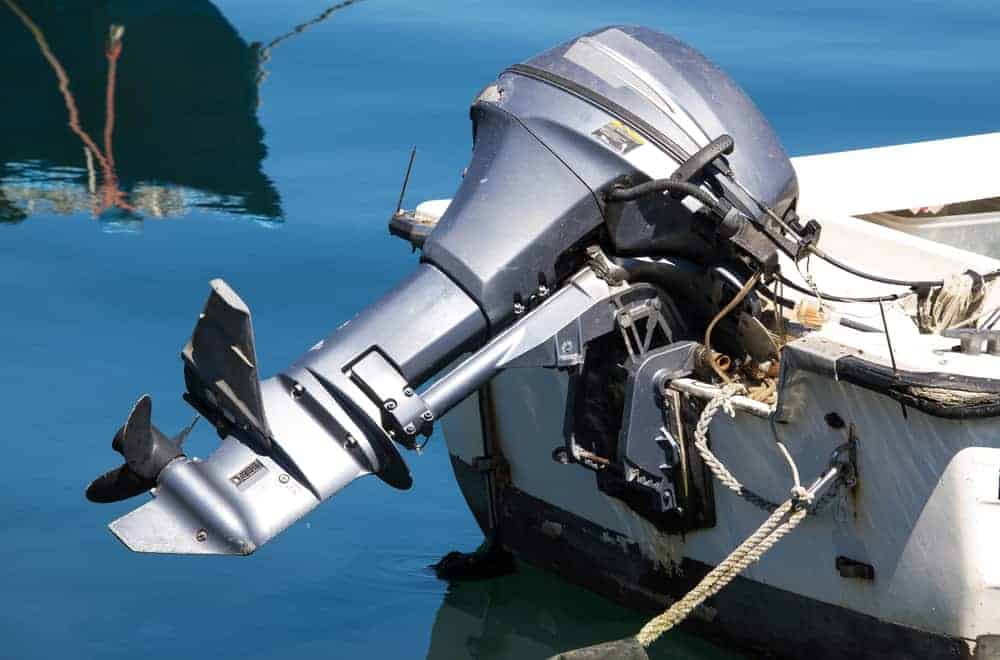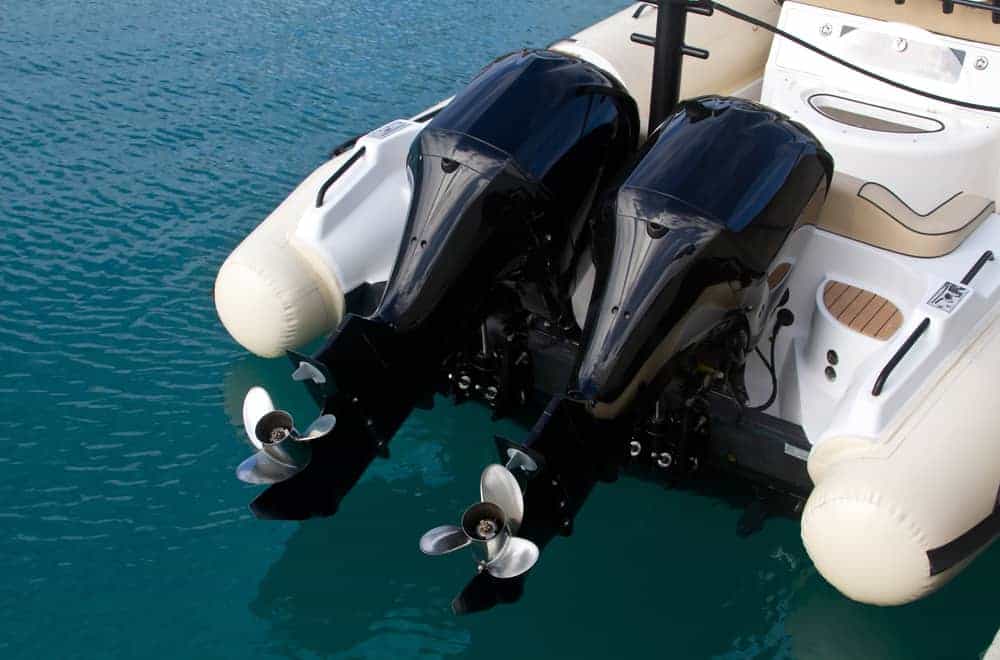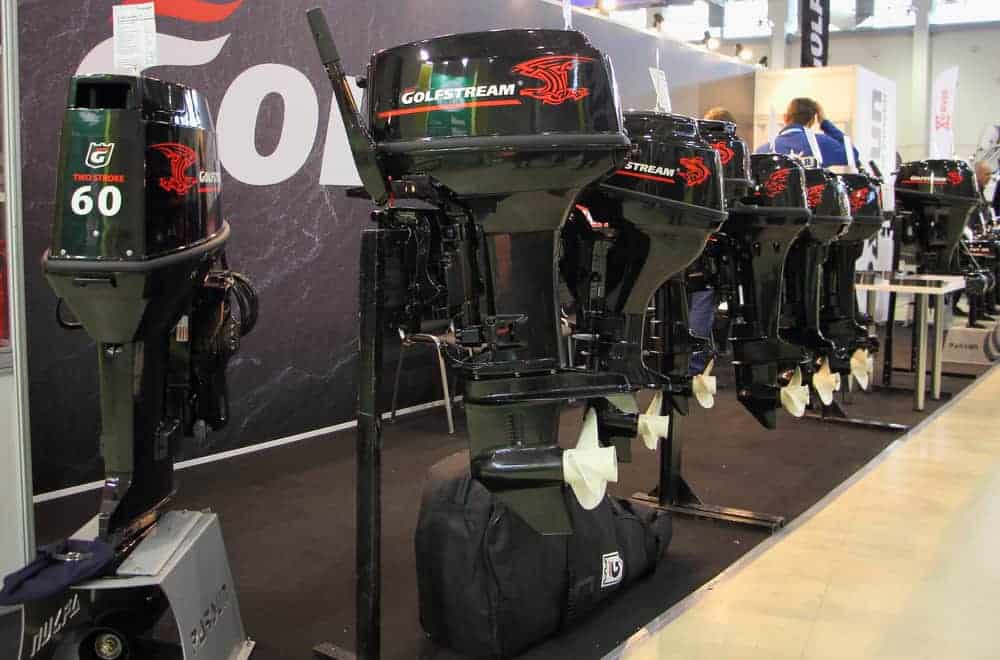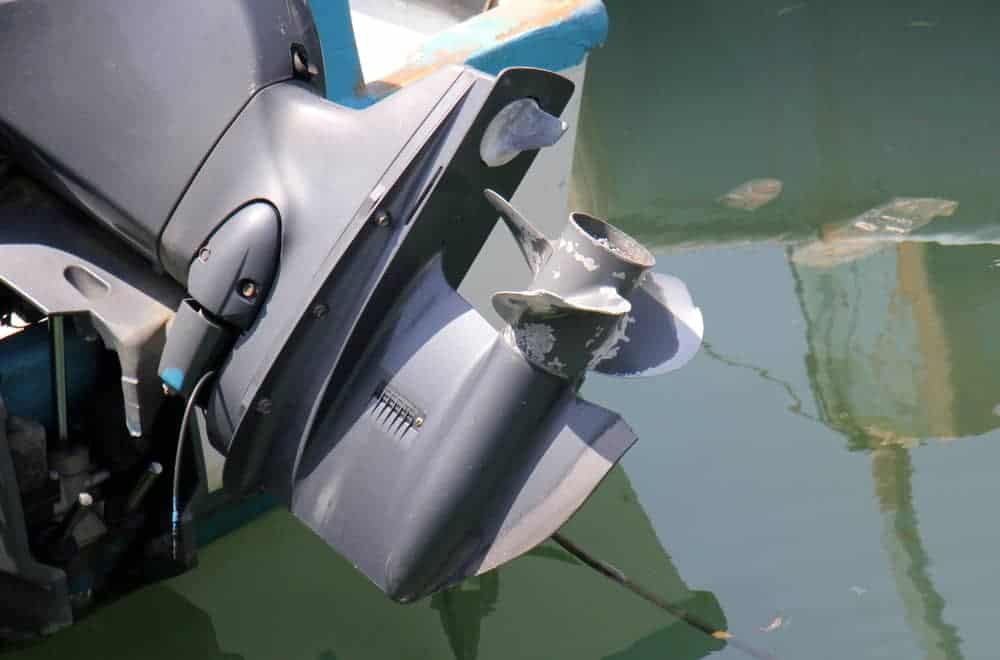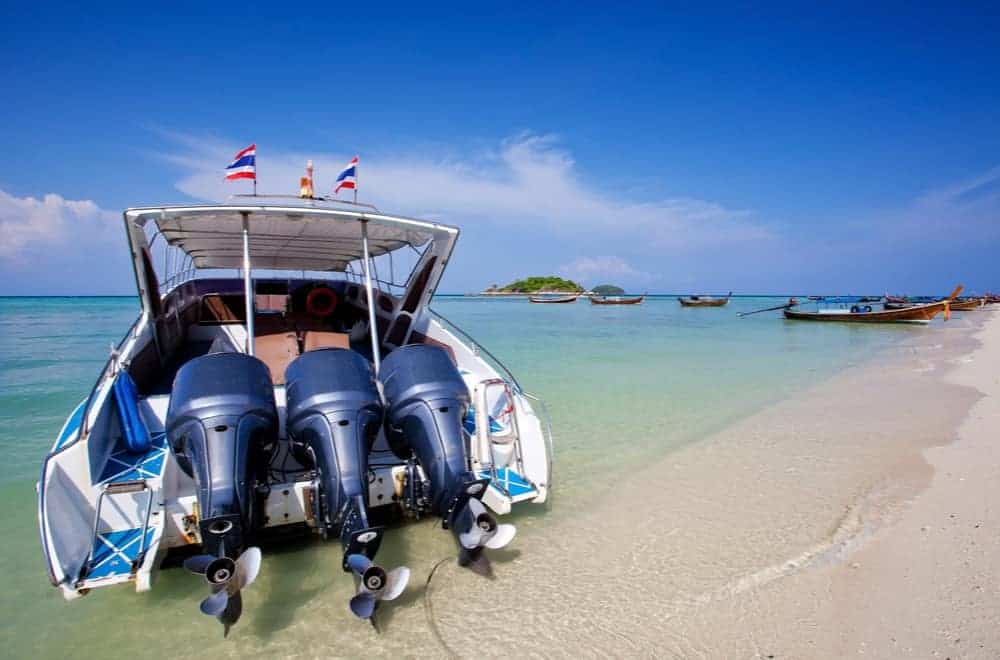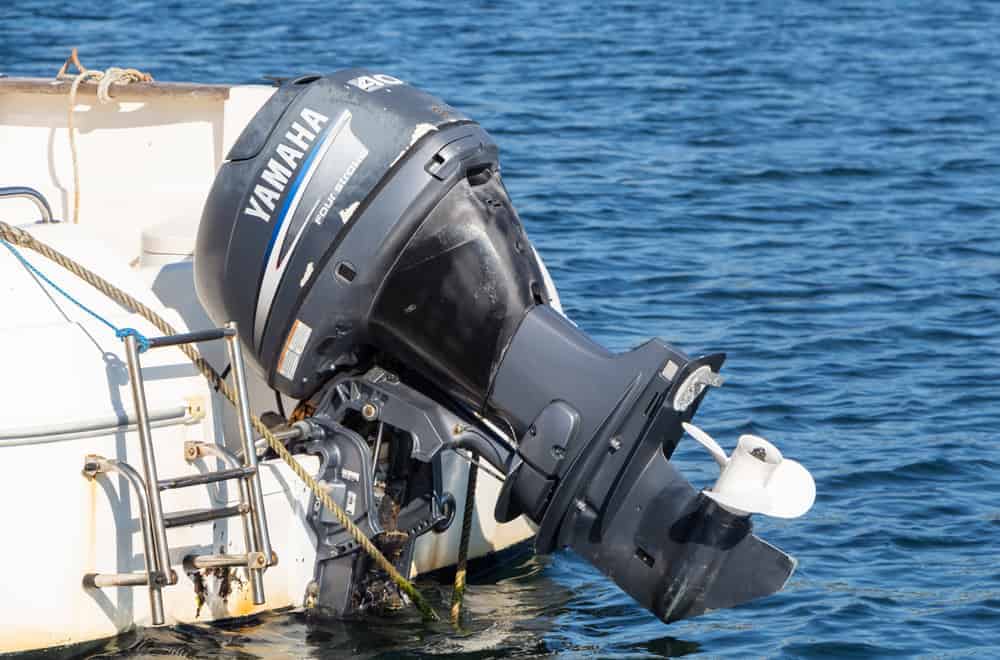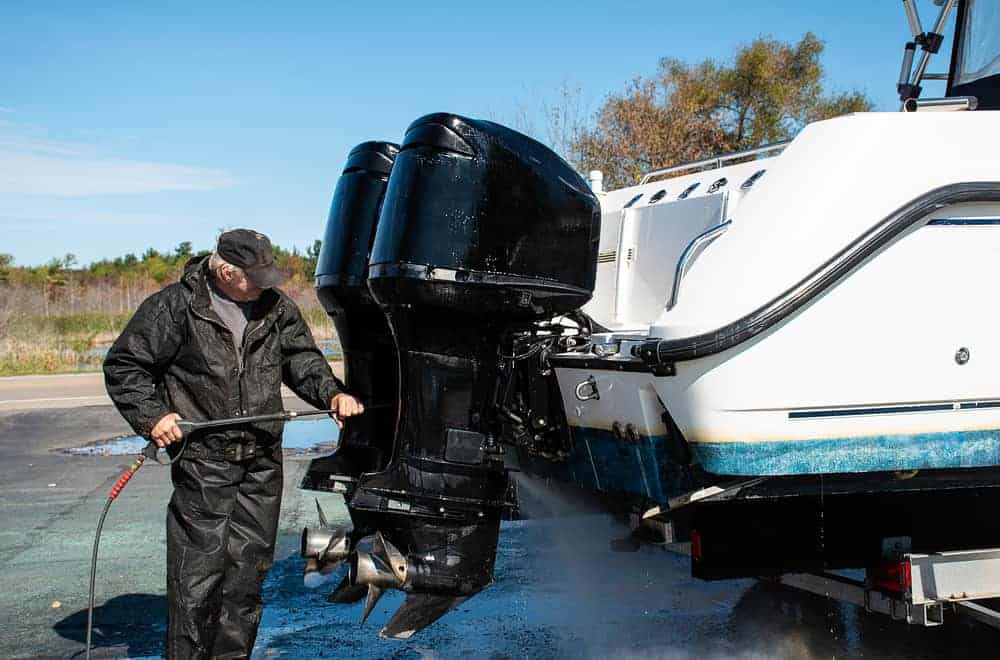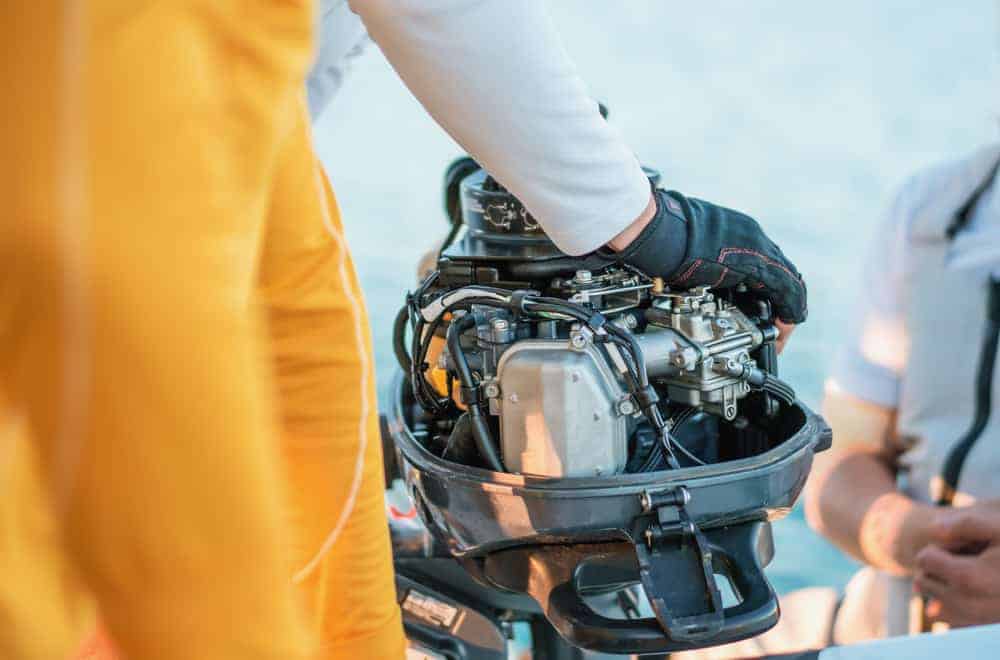Before buying a boat, one of the crucial questions is how long do boat motors last since the engine condition significantly affects your vessel value. Even though most last approximately 1,500 to 5,000 hours before serious engine service, it will primarily depend on the motor type and quality and how you use it.
In most cases, you will notice the first minor issues after 1,000 hours of use. They will probably turn into unsolvable problems if you fail to complete the necessary maintenance on time. Let’s take a closer look at that matter.
Table of Contents
How Long Do Boat Motor Last?
Most engines, particularly marine ones, work under adverse conditions, directly affecting their longevity. Therefore, you should consider a few crucial factors before buying a motor, like:
Motor type
1. Outboard engine
A typical outboard engine should work at least 1,500 hours without significant problems. In other words, you can count on 7 to 8 years enjoying sailing or fishing, based on the Recreational boater logs. According to the calculation, an average annual boat usage is approximately 200 hours.
On the other hand, regular engine flushing and oil changing after every 50 hours will prolong its life to 10 or even 20 years. Some quality two-stroke motors can last for 30 years when servicing them regularly.
There is one more thing. You can count on a long-lasting motor if you use it regularly. Starting the engine only from time to time will remarkably shorten its usage period.
2. Inboard engine
The rule of thumb is that inboard engines protected inside the boat typically last longer. If you maintain your motor regularly, you can probably use it for at least 2,000 to 3,000 hours.
It will be enough to follow the marine engine manufacturer’s recommendation and change oil every 50 engine hours. That is about twenty changes in 1,000 hours of use. If you use your boat only during summer and take care of it properly, it is virtually impossible to wear out the engine.
Gas type
1. Gasoline engine
An average marine gasoline motor will run about 1,500 hours before requiring a major overhaul. You can use it without worries for at least 1,000 hours, but then it is time for serious maintenance. Otherwise, you will face significant and probably unsolvable problems after another 500 hours.
You should keep in mind the operating condition when calculating the time for checking the engine up. Salt air, high humidity, neglect, and intermittent will shorten its usage period.
2. Diesel engine
An average marine diesel motor typically runs for about 5,000 hours before a major overhaul. However, well-maintained engines can work perfectly for 6,000 to 8,000 hours.
Even though this motor type is always more expensive, it will pay off in the long run. Keep in mind that manufacturers build this type to tighter tolerances, and it can withstand worse conditions than the gasoline model. Such an engine is safe, economical, and non-use affects it less.
Brand
You can find several reputable engine brands on the market, but none is perfect. Therefore, you should determine your priorities and choose the best option for your boat.
1. Outboard motor brands
An outboard engine is the one you should mount outside the hull on your boat’s stern. The possibility to tilt it out of water when not sailing will facilitate storage and prolong its life.
Evinrude – It is currently the best outboard motor brand. They produce old 2-stroke and modern 4-stroke engines with an average horsepower of 25 to 300 HP. If you choose one of their models, you will get a fuel-efficient motor that will last at least 1,500 to 2,000 hours before requiring a major overhaul.
Honda – These reliable 4-stroke outboard gas engines have 2 to 250 hp. They have lower operating costs, come with a 5-year manufacturer’s warranty, and you can use any model for over 2,000 hours before significant checking up.
Mercury marine engines – This company is well-known for quality gas-powered 2- and 4-stroke outboard motors that range from 2.5 to 400 HP. Each model can last 2,000 or even 3,000 hours with proper maintenance.
Suzuki – The manufacturer offers 20 different lightweight, high-output, 4-stroke outboard motors with 2.5 to 350 HP. You can expect any of them to last 1,500 to 2,000 hours or even more when maintained it properly.
2. Inboard motor brands
An inboard motor has a drive shaft and propeller, and you need to mount it under the deck inside the boat’s hull. You should use a rudder to steer this fuel-efficient, quiet model. It will have more torque and better horsepower but will also cost more.
Crusader Engines – This company produces durable gasoline inboard motors with developed features. Their horsepower ranges from 275 to 425 HP and can last 2,000 to 2,500 hours when you regularly check oil levels and maintain them timely.
Ilmor motor series – These powerful and fast engines are perfect for recreational boating and competitive water sports. You will get a motor with 500 HP that will last 2,000 and 2,500 hours and a 7-year (1,000 hours) Standard Limited Warranty.
MAN engines – Their efficient engines with 50 to 2,000 HP come in both diesel and gas models. Their lifespan is 1,000 hours for a gas option, while diesel engines last at least 1,000 hours longer with adequate maintenance. In other words, they will last 1,500 to over 4,000 hours on average. Plus, the manufacturer offers a Gold Standard Certificate and guarantees after installation.
Yamaha – They can offer you both inboard and outboard engines, and their reliability depends on the type you choose. With proper maintenance, these engines can last 1,500 to over 3,000 hours.
Horsepower
Even though you can find boat engines with 2 HP, new inboard and outboard models will typically have over 100 HP.
The rule of thumb is that more horsepower brings more power and faster vessel. Depending on the model, make, and water type, such a strong motor will last more than 2,000 hours.
2-stroke or 4-stroke motors
The speed of 4-stroke engines is always lower than 2-stroke types, and you can expect such an outboard motor to last longer.
However, there is almost no difference between them, and most models have a life span of approximately 1,500 hours. Although 2-stroke outboard motors wear out faster, they are easier to maintain so that you can prolong their usage period.
Other factors
- Using the boat in fresh or saltwater
- Frequency of using your vessel
- Time spent in idle
- Regular maintenance and winterizing
- Following manufacturer recommendations about winterization
Used engine
Many boat owners are looking for a used motor to lower expenses. It is not a bad option, but you should be careful and pick out the one that can last.
The first thing to check is how many hours the particular motor has worked. Remember that mileage is not so crucial in this case, but the ratio between the engine age and its use.
The second thing you should check is whether the engine is clean. A dirty motor usually means that the previous owner didn’t take care of it properly.
Finally, always insist on testing the used engine and make sure it works as required. Be suspicious if you notice atypical vibrations, any signs of smoke, or excessive noise.
Tips to Prolong Boat Engine Life
There is a list of things you can do to get the most out of your boat engine, like:
Proper use
- Match the boat and engine sizes
- Purchase an adequate shaft length to fit your vessel
- Run the motor regularly and flush it after each use
- Warm the engine up before using it
- Keep cruising speed whenever possible
- Run it from time to time offseason
- Keep the fuel clean by changing the filters
- Use the proper fuel mixture and recommended lube
- Avoid letting the engine go idle
Regular maintenance
There is no need to check your engine after every use. However, you should maintain it at least once a month when using your boat regularly. The list includes:
- It is necessary to change the oil in the outboard engine every six months or after 50 hours
- Frequently change the filter to prevent internal corrosion and remove corrosion under the cowl when it appears
- Regularly change the gearcase lubricant and spark plugs
- Check the fuel line and fuel primer bulb for cracks
- Make sure the fuel line doesn’t leak
- Check the fuel tanks and fuel line clamps for rust presence
- Regularly inspect if there is water in the fuel
- Check whether the tank vent aspirates properly
Winterizing
Proper engine winterizing will prevent water from coming inside, freezing, and causing cracks. The best option is to follow a manual with winterizing instructions, but there is a list of necessary actions if you have lost it:
- Freshwater flushing to get rid of dirt
- Empty carburetors and fuel lines and fog the carburetor intake
- Drain water-holding cells and cooling passages
- Drain the fuel tank, gearcase, and supply lines
- Lubricate visible joints, pivots, gears, and propeller shaft
- Fill the oil tank
- Fix damaged paint
- Store the engine upright
Summary
There is no simple answer on how long boat motors last, but you should consider several elements before buying one.
It is vital to match the engine and boat size and pick out the adequate model and mark to use it to be satisfied. Plus, never forget that regular maintenance makes a difference in every possible way.
